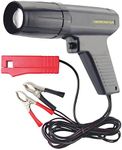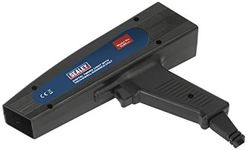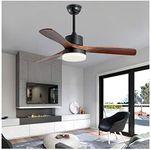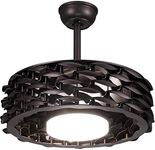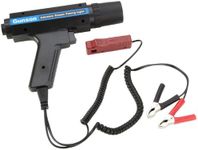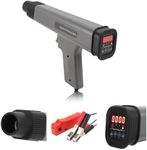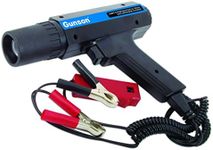Buying Guide for the Best Timing Lights
Choosing the right timing light is essential for accurately tuning and maintaining your vehicle's engine. A timing light helps you set the ignition timing, ensuring that the spark plugs fire at the correct time for optimal engine performance. When selecting a timing light, consider the key specifications that will best suit your needs and the type of vehicle you are working on. Understanding these specifications will help you make an informed decision and achieve the best results for your engine tuning tasks.Type of Timing LightThere are three main types of timing lights: inductive, direct contact, and advanced. Inductive timing lights are the most common and easiest to use, as they simply clamp onto the spark plug wire. Direct contact timing lights require a direct connection to the spark plug, which can be more cumbersome. Advanced timing lights offer additional features like digital readouts and adjustable advance settings. Choose an inductive timing light for general use, a direct contact light if you prefer a more traditional approach, or an advanced light if you need extra features for precise tuning.
Light SourceTiming lights can use different light sources, such as incandescent bulbs or LEDs. Incandescent bulbs are traditional and provide a bright, consistent light, but they can be less durable and consume more power. LED timing lights are more energy-efficient, have a longer lifespan, and are often brighter, making them easier to use in well-lit environments. If you frequently work in bright conditions or want a more durable option, an LED timing light is a better choice. For occasional use in various lighting conditions, an incandescent timing light may suffice.
Adjustable AdvanceAn adjustable advance feature allows you to set the timing light to account for the engine's advance timing, making it easier to read the timing marks accurately. This feature is particularly useful for high-performance engines or when fine-tuning the ignition timing. If you are working on a standard vehicle and do not require precise adjustments, a basic timing light without this feature will be sufficient. However, if you are tuning a performance engine or need precise control over the timing, opt for a timing light with an adjustable advance feature.
Digital DisplaySome timing lights come with a digital display that shows the engine's RPM and other relevant information. This can be helpful for more accurate tuning and monitoring of the engine's performance. A digital display is especially useful for those who prefer a clear, easy-to-read interface. If you are comfortable with traditional analog displays and do not need additional information, a basic timing light without a digital display will work fine. For those who want more detailed information and ease of use, a timing light with a digital display is recommended.
Durability and Build QualityThe durability and build quality of a timing light are important factors to consider, especially if you plan to use it frequently or in harsh environments. Look for timing lights made from high-quality materials with sturdy construction to ensure they can withstand regular use and potential drops. If you are a professional mechanic or frequently work on vehicles, investing in a durable, well-built timing light is essential. For occasional use, a less expensive model with decent build quality may be sufficient.

